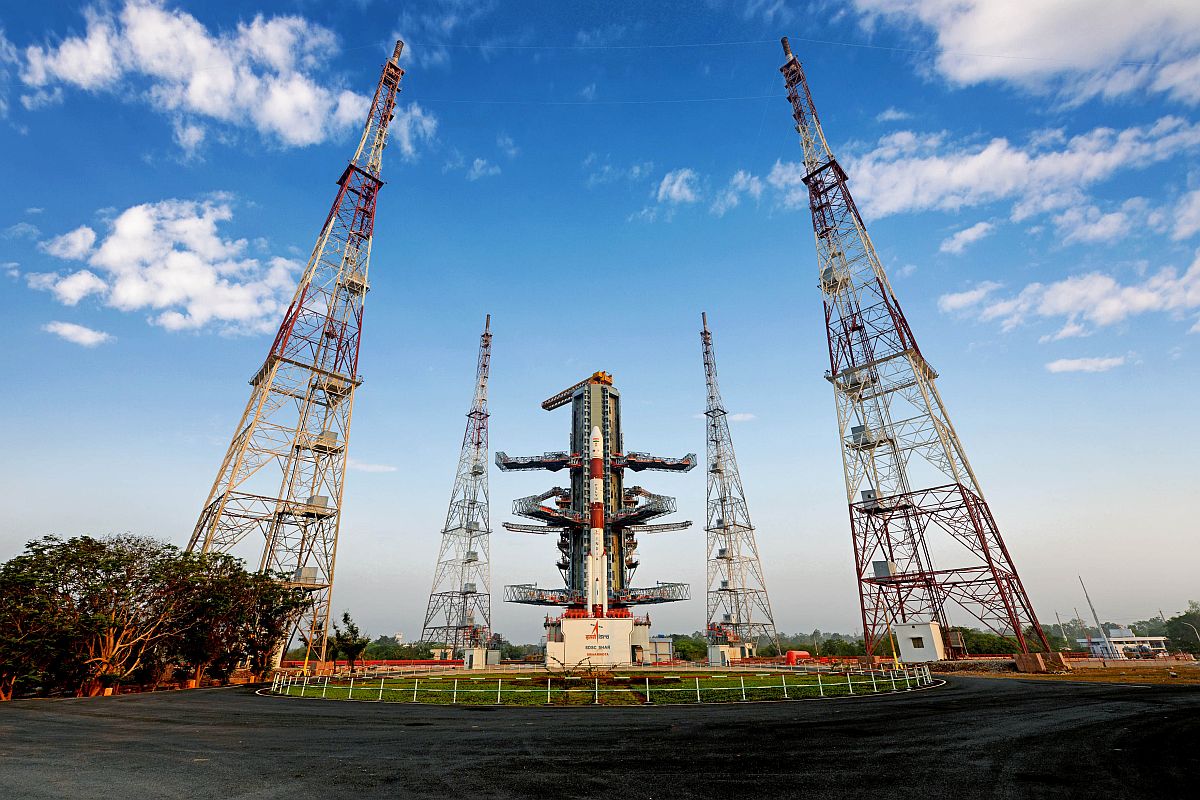DRDO and IIT Delhi showcase breakthroughs in quantum communication technologies
The DRDO Industry Academia–Centre of Excellence (DIA-CoE) at IIT Delhi showcased groundbreaking advancements in quantum communication technologies here on Tuesday.
The mission marks several firsts to the credit of the space agency as it would manoeuvre satellites in various orbits and orbital experiments including on maritime satellite applications.

PSLV-C45/EMISAT Mission (Photo: isro.gov.in)
The Indian Space Research Organisation (ISRO) on Monday put into orbit the Emisat, an electronic intelligence satellite for the Defence Research and Development Organisation (DRDO) in a copybook style.
ISRO’s PSLV-C45 lifted off from Satish Dhawan Space Centre in Sriharikota carrying EMISAT and 28 customer satellites onboard. The EMISAT was successfully injected into sun-synchronous polar orbit.
The notable aspects of this space mission were the flying of a new variant of the Polar Satellite Launch Vehicle (PSLV), switching off and on the fourth stage engine couple of times and the use of the fourth stage as an orbital platform carrying three experimental payloads.
Advertisement
The PSLV rocket standing at 44.5 metres tall and weighing about 239 tonnes with a one-way ticket, hurtled itself towards the skies ferrying the Emisat and 28 international customer satellites — 24 from the US, two from Lithuania and one each from Spain and Switzerland.
“It is a special mission for us. We will be using a PSLV rocket with four strap-on motors. Further, for the first time we will be trying to orbit the rocket at three different altitudes,” ISRO Chairman K. Sivan had earlier told IANS.
The PSLV is a four-stage engine expendable rocket with alternating solid and liquid fuel. In its normal configuration, the rocket will have six strap-on motors hugging its first stage.
The mission marks several firsts to the credit of the space agency as it would manoeuvre satellites in various orbits and orbital experiments including on maritime satellite applications.
According to ISRO, a new variant of the rocket PSLV-QL equipped with four Strap-On motors in the first stage is used for the launch.
PSLV, also used in India’s two key missions — “Chandrayan” in 2008 and Mars Orbiter in 2013, is a reliable and versatile launch vehicle for ISRO with 39 consecutive successful flights till June 2017 and five-in-a-row from January 2018.
India will also be launching two more defence satellites sometime in July or August with its new rocket Small Satellite Launch Vehicle (SSLV).
The previous launches by ISRO this year include the imaging satellite Microsat-R for military purpose along with 1.2 kg Kalamsat in January onboard PSLV-C44.
In February, ISRO launched India’s communication satellite GSAT-31 from the European launch service provider Ariane from French Guiana.
The mission comes days after India entered an elite league of space power nations with its successful test of an anti-satellite missile (ASAT).
Prime Minister Narendra Modi had on March 27 announced that India had carried out Mission Shakti in which the indigenously-built missile ASAT took out a target Indian satellite in the Low Earth Orbit (LEO) giving the nation a decisive edge over any enemy activity in space.
The DRDO’s Ballistic Missile Defence interceptor was used for the mission, which is part of the ongoing ballistic missile defence programme.
(With agency inputs)
Advertisement